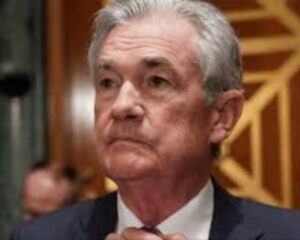China’s gold market delivered a strong performance in March and the first quarter of 2025, led by record-setting prices, surging ETF inflows, and continued central bank purchases. However, the rally in gold also contributed to weakened imports and sluggish jewelry demand, according to the World Gold Council (WGC).
Ray Jia, Head of Research for China at the WGC, noted that domestic gold prices in RMB reached all-time highs in March. The SHAUPM index recorded its strongest month in a year, while the LBMA Gold Price PM in USD hit its highest level since July 2020. “Geopolitical tensions and unpredictable U.S. trade policies enhanced gold’s role as a safe-haven asset,” Jia said.
Gold prices rose 19% in both RMB and USD terms in Q1. It was the best Q1 for RMB gold since 2002 and the strongest dollar-denominated quarter since 1975. Safe-haven demand, USD weakness, and robust global ETF inflows were key drivers.
However, wholesale gold demand weakened. March withdrawals from the Shanghai Gold Exchange rebounded to 120 tonnes, up 30 tonnes from February but still down year-on-year. Q1 demand totaled 336 tonnes—29% below the 10-year average and down 36% compared to Q1 2024.
Investment demand was the standout. Chinese gold ETFs saw RMB 5.6 billion ($772 million) in inflows in March, lifting total assets under management to RMB 101 billion ($14 billion), with collective holdings reaching a record 138 tonnes.
The momentum continued into April, with ETF holdings rising another 29 tonnes in the first two weeks, and AUM surging 25% amid elevated gold prices and worsening trade tensions.
China’s central bank also added gold for the fifth straight month in March, purchasing 2.8 tonnes and bringing official reserves to 2,292 tonnes—6.5% of total forex reserves. Gold’s valuation rose to $230 billion, contributing over 1% to the 2.3% quarterly increase in total reserves.
However, imports slowed sharply. January imports fell to just 17 tonnes—the lowest since February 2021—before recovering to 76 tonnes in February, still below 2024’s 102-tonne monthly average. Net imports dropped to zero in January and only recovered to 49 tonnes in February, down 38% year-over-year.
Looking ahead, the WGC expects Chinese gold investment to remain strong in light of the ongoing U.S.-China trade war and global uncertainty. Four Chinese insurance companies joined the SGE in March, a development that may support longer-term demand.
Still, jewelry demand remains under pressure. Despite the upcoming May holiday, record gold prices and economic concerns may continue to dampen consumer appetite in this segment.





